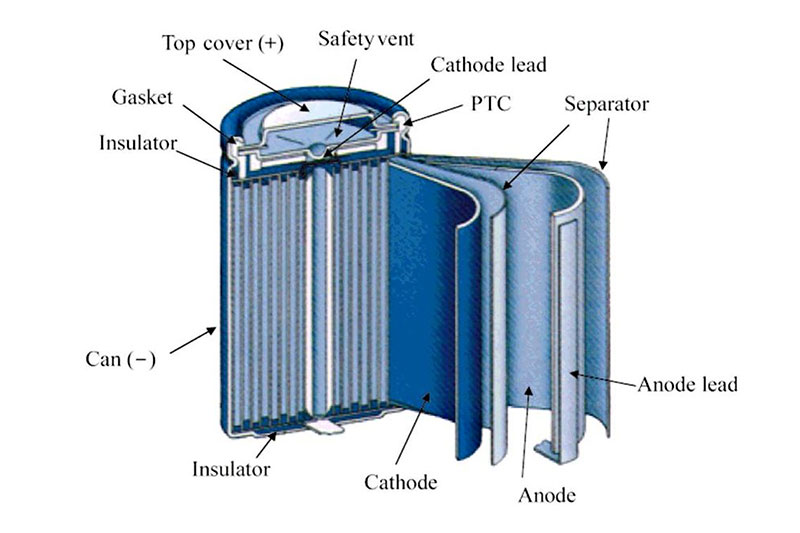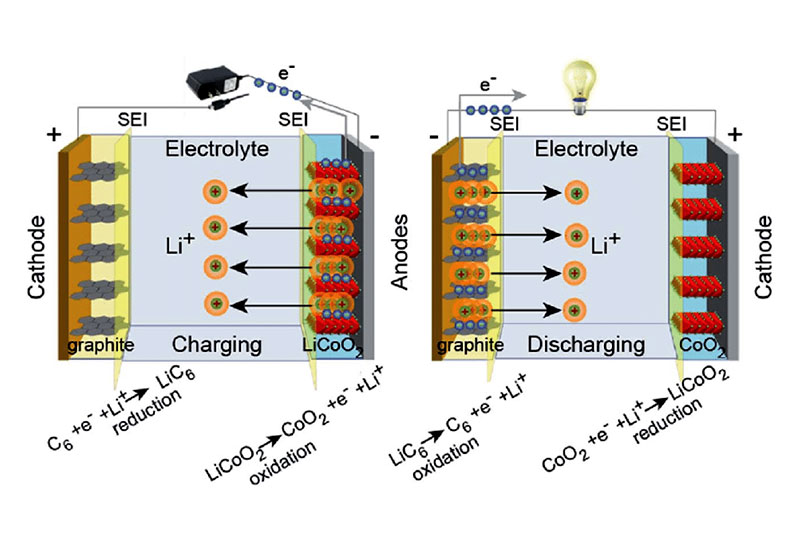With the continuous development of 5G technology and acceleration of establishment of the global clean energy syst...
With the continuous development of 5G technology and acceleration of establishment of the global clean energy system, the demand for lithium-ion batteries (LIBs) used in 3C/consumer electronics, energy storage for base stations and new energy vehicles (NEVs) are bound to grow steadily. In the meantime, the lithium-ion battery separators will also usher in a historic record growth, which would further spur the corresponding film materials market.

the structure of a cylindrical lithium-ion battery
How does the lithium-ion battery work?
First, let’s have a brief overview of its structure and principle to get a better understanding of the materials of each component. In terms of the structure, the lithium-ion battery is mainly composed of the cathode, the anode, electrolyte, separators, and packaging materials. How does the lithium-ion battery work? The charging process is that the Li+diffuses from the anode and moves to the cathode through the electrolyte. The graphite as the cathode with layered structure has many micropores, into which the Li+ just arriving here can be embedded. The more the Li+ is embedded into the micropores, the larger the charging capacity is. The discharging process is vice versa. Meanwhile, the electrons move from the anode to the cathode through the external circuit, forming the current.

the charging and discharging processes of the lithium-ion battery
What is the role of lithium-ion separator?
If the cathode and anode materials come into contact, it will cause a short circuit, or even combustion and explosion of the battery. The separator is one of the key internal components of the lithium-ion battery. It is an insulating material for separating the two electrodes of the battery to prevent short circuit. It’s of great importance for the safety of the battery. In addition, the separator is immersed in the electrolyte, with many micropores on its surface, allowing the passage of lithium-ions in the electrolyte.
The properties metrics of the separator such as thickness, porosity, tensile strength, puncture strength and liquid absorption will determine the interface structure, internal resistance, etc., which directly affects the capacity, discharge rate, cycle life and safety performance of the battery. Therefore, separators with excellent properties play a vital role in improving the overall performance of the battery. To further improve the safety performance of the battery, and prevent short circuit, the puncture resistance strength of the separator must be high, as well as the low thermal contraction and high mechanical strength. In addition, because the lithium-ion battery electrolyte is an organic solvent, high wetness and solubility resistance to the electrolyte is also required.
The separator varies according to different battery type. The current separator materials on the market are mainly polyethylene (PE), and polypropylene (PP) based films. At the same time, new separator materials used in the manufacture of power lithium-ion batteries mushroom and are gradually starting to be applied. The most typical representative is polyimide film.
ZTelec Group has the most advanced PI film production line, integrating R&D, production, and sales of functional polyimide films, and its featured product the polyimide film used as lithium-ion battery separators has the following advantages:

polyimide film
1. High thermal resistance: up to 250℃
2. Very low shrinkage: prevent the shrinkage of the separator from causing a large area of short circuit
3. High insulation properties: to prevent short circuit caused by contact between the two electrodes materials
4. Good wetness and high solubility resistance with electrolyte
5. Low temperature output and long charging cycle life
If you are interested in our products,, please send us a message and we will contact you as soon as we receive it. Email: info@ztelecgroup.com whatsApp: +8616650273778